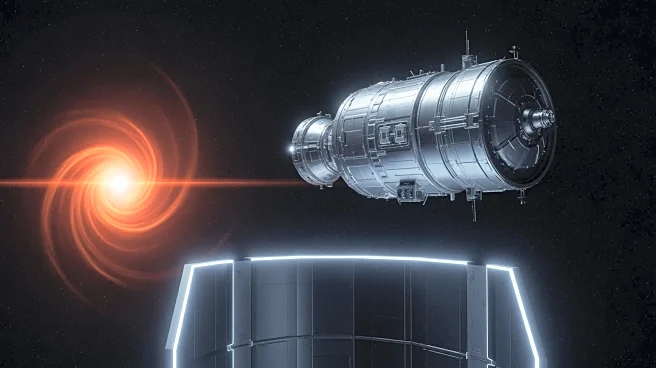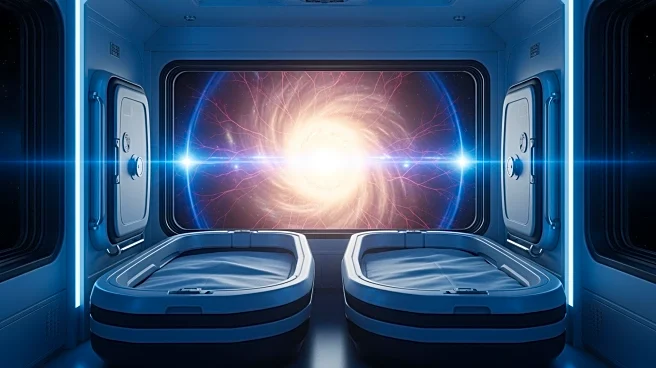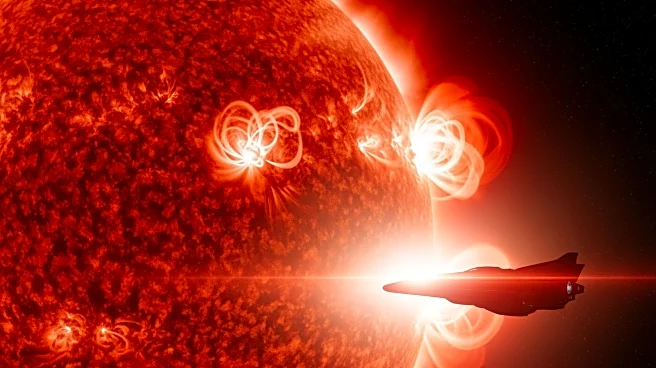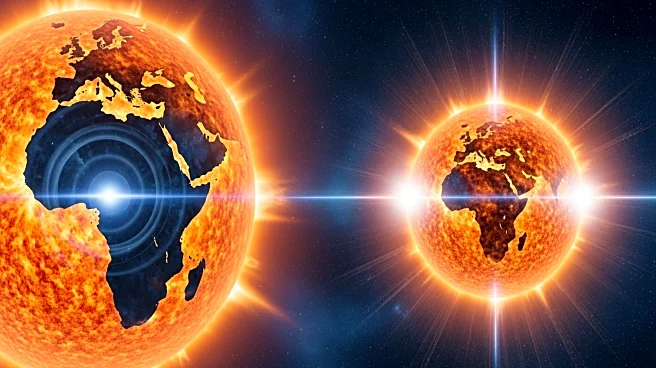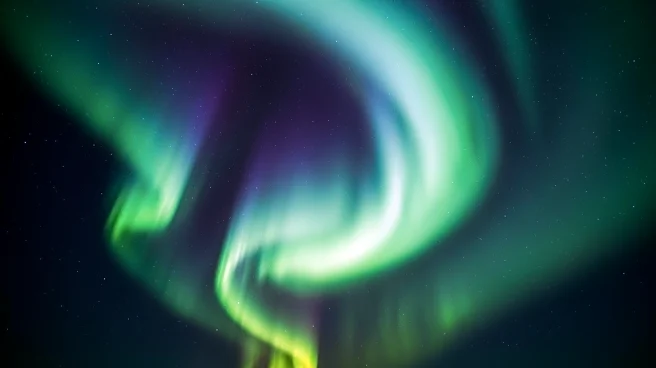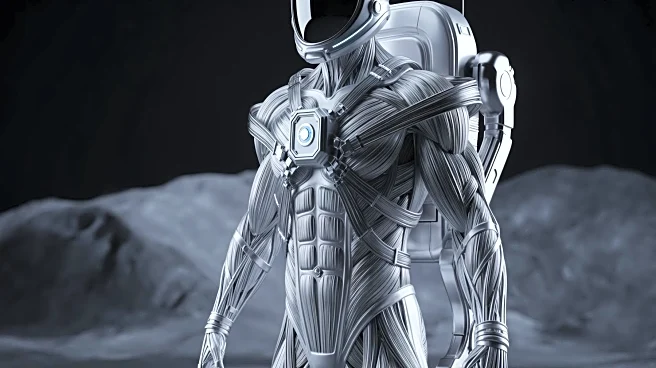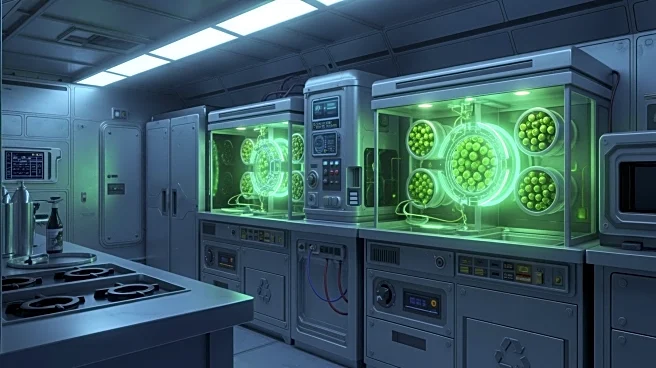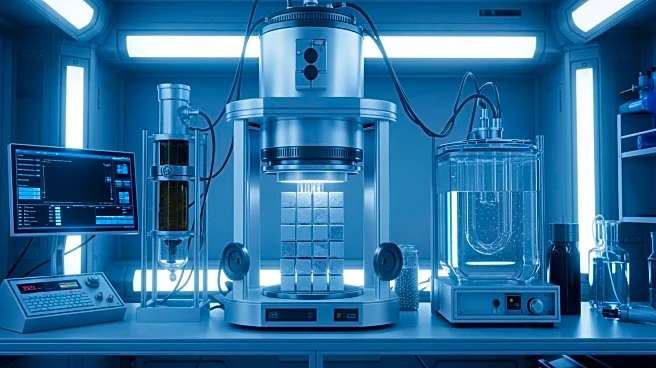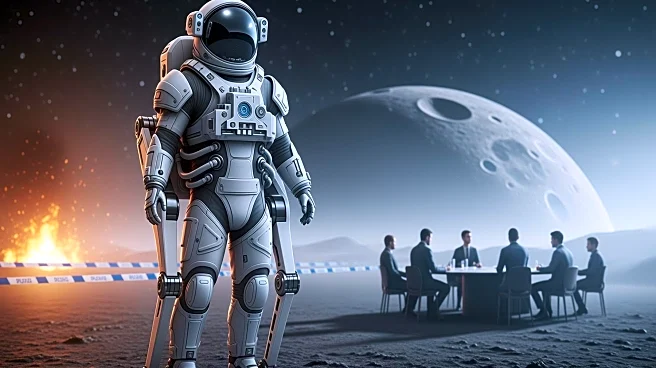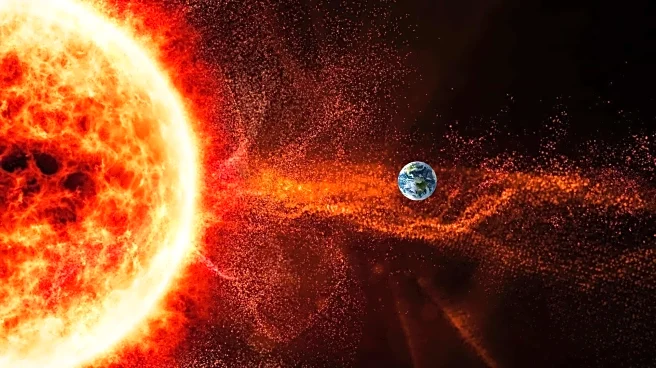What's Happening?
Astronauts aboard the International Space Station (ISS) adjusted their sleeping arrangements due to the threat posed by a 'cannibal' solar storm. The storm, characterized by high-energy solar particles,
prompted the Russian cosmonauts to sleep in the ISS laboratory module as a precaution. The solar storm, one of the most powerful since 2005, has the potential to disrupt satellites and Earth's magnetic field, affecting navigation and energy infrastructure. The storm coincides with the Sun's solar maximum phase, leading to increased solar activity and auroras visible across Europe, North America, and Australia.
Why It's Important?
The solar storm highlights the vulnerabilities of space missions to solar activity, emphasizing the need for protective measures against radiation. The potential disruption to satellites and infrastructure could have significant implications for communication and navigation systems globally. The event underscores the importance of monitoring solar activity and developing strategies to mitigate its impact on technology and human safety in space. The visibility of auroras across multiple continents also draws attention to the natural phenomena associated with solar storms.
What's Next?
The ISS crew will continue to monitor solar activity and adjust their routines as necessary to ensure safety. The ongoing solar maximum phase may lead to further solar storms, requiring continued vigilance and preparedness from space agencies. The event may prompt discussions on improving space station infrastructure and radiation protection measures. The scientific community will likely study the storm's effects to enhance understanding of solar phenomena and their impact on Earth and space missions.
Beyond the Headlines
The solar storm raises questions about the long-term sustainability of space missions and the need for advancements in radiation shielding technology. The ageing infrastructure of the ISS, particularly the Russian segment, highlights challenges in maintaining safety standards in space. The event may influence future designs of space habitats and vehicles to better withstand solar activity.
